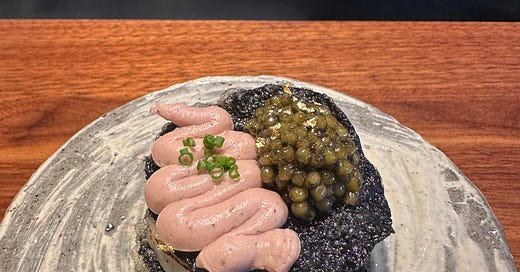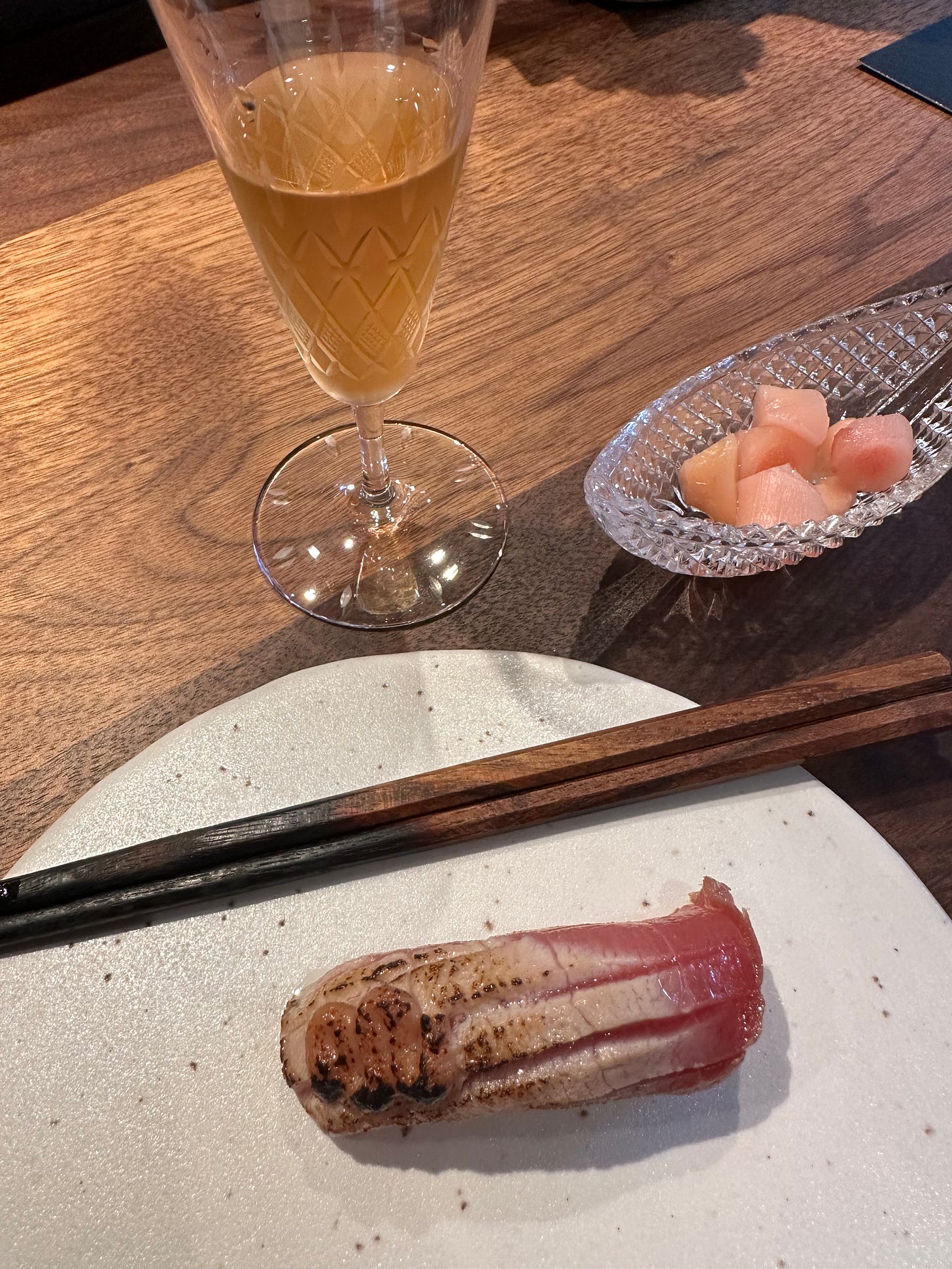Crunch: How Texture Drives What We Eat
What I talk about when I talk about the texture of food, beer made with fonio, and a bionic leg for hiking.
Hi to everyone old and new. Thank you to my letter writers – I love getting notes. A short reminder: I continue to write this newsletter because of my generous (and adored) paid subscribers. Your support gives me the confirmation that what I’m doing is valued. It helps me keep at it when parts of me wishes it wasn’t on my to-do list, and other parts love the freedom to write about anything. You help keep the lights on. If you want to consider upgrading your subscription–please do!
Onwards.
There’s a question I like to ask folks when I’m moderating a panel on alternative proteins (aka the variety of non-traditional meat we eat). It’s this: “What’s more important – flavor or texture?” Many answer that it’s both, somewhat of a side step from my question. I believe texture is crucial to acceptance and more complex to achieve. Flavor, it seems, can always be improved. But that’s when we’re talking meat.
Mondelez (maker of many a snack) reports that “consumers would rather eat snacks instead of meals.” Texture is everything when we’re talking snacks,
I learned recently, by way of a STAT essay about gorging on samples at a recent food technologists event in Chicago, that 80% of millennials report that texture influences their snack cravings. In STAT, the author writes: “We’re more into texture than any other generation.” To my non-millennial ears, I wondered more about Gen Z snacking because really, millennials are getting kinda old to still be snacking. (Let the hate mail commence.)
In this essay, a Gen Z food writer shared that their generation is looking for something they can take outside and share with friends. They’re looking for the experience. I think texture is key to experience. Bubbles in prebiotic sodas, noisy crunching in puffs and chips, and toothsome chewiness in candies. Gen-Z wants weird textures and unfamiliar flavors.
Most will tell you the older generations shop for taste, price and convenience. Yes, and. Flavor is critical, but I definitely note texture missteps. The veggie burger that’s more mushy than I’d hoped. The food bar that delights with textural variety in each bite. The apple that’s not crisp. And yes, the snacks that entice like sweet and salty popcorn that’s delectably crispy instead of soft.
Back to meat. I recently dined at Friends Only in San Francisco, a Japanese omakase restaurant. Sushi restaurants usually want you to know how fresh their fish is or even how recently there fish was flown in from Tsukiji, the fish market in Japan. At Friends Only, the fish is dry-aged. I didn’t know this before sitting down but what a surprise. Each bite of fish had a buttery and creamy texture beyond what I expected. Different, unusual, unexpected. The dinner was for Vow, an Australian cultured meat company that I wrote a bit about for Fast Company.
Vow is making “premium products” like foie gras and parfait – think of it as a mouse. Both are made from cultured quail cells, fat and a few other ingredients. The texture of the foie gras was firm with some chew. The parfait was soft and smooth. I didn’t have an expectation from them. They were interesting because chefs had labored to make them interesting.
The chefs at Friends Only created single bites that combined dry-aged fish with Vow’s cultured meat. The fish conveyed a melt-in-your-mouth texture along with the firmness and teeth sink we expect from animal meat. Vow’s cultured meat was like a less flavorful dollop of uni atop corn porridge, pasta or ice cream. It piqued my curiosity even if it didn’t pack a punch in the texture arena.
What am I saying? In this example, Vow’s cultured quail needed the meat to exist. It won’t always be that way. Maybe one day it can be the filling in ravioli or the minced meat in a dumpling. Does all cultured meat need traditional meat to exist? For now the answer seems to be yes. We compare the texture and the flavor immediately. One day it won’t be like this. How old will we be then? Your guess is as good as mine.
I’m just here for the tidbits:
Brooklyn Brewery and Carlsberg are making beer with fonio, an African grain that’s not actually a grain. It’s a grass and the grains are small like quinoa or tabbouleh. Don’t know it? Buy some fonio here.
Best Day Brewing, an NA beer brand based in Northern California, is donating all of its profits from its new Nature’s Pils to the Nature Conservancy. This makes my inner hiker so happy.
Speaking of hiking, Skip, a spinoff from Google X, developed Mo/Go, a hiking assist AI-powered leg that snaps onto one of your less-than legs to help you up the hard hills. Have bad knees? It will help you step gingerly down the steepest of grades. Or so they say. Either way looks weird and cool and I’d love to try this on Mt. Tam. The bionic leg will be on the market in 2025.
About those recalls. Many food outbreaks are due to listeria. In the meat world, Boar’s Head recalled over 7 million pounds of deli meats. In the plant world, there were recalls in Canada on plant-based milks (including the well-known brand Silk). It’s more rare to see something like this in plant-based but it happens everywhere in our supply chain.
Plant-based makes the leap into medical devices. Andrew Pelling, a biophysicist at University of Ottawa, is playing with produce. First he turned an apple into an ear. Now he’s using an asparagus spear to replace the building blocks for a damaged spinal cord. It’s not long off either. The FDA designated it as a “breakthrough device” in October 2020. Via Gastro Obscura
Where you can find me?
I’m in Ohio next week attending the Deep Space Mission Food Challenge. No, I will not be drinking Tang.
I’ve got a big vacation coming up and I’m looking for good reads to download to my Kindle – please share!





